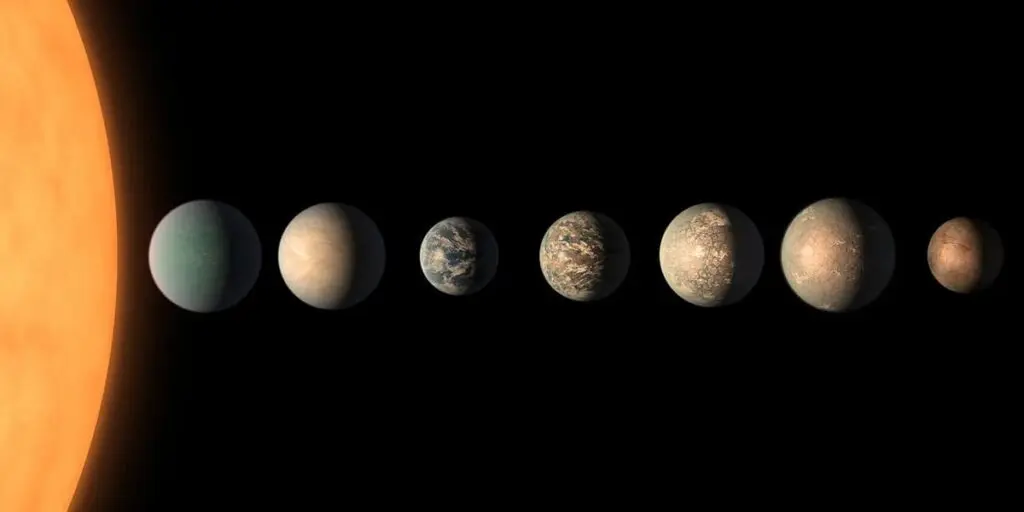
Forty light years away from us shines a star slightly larger than Jupiter, a few billion years older than the Sun, which hosts a rich planetary system consisting of seven worlds similar in size to Earth: TRAPPIST-1.
The seven planets of TRAPPIST-1, discovered between 2016 and 2017, orbit very close to the star, with rotation periods lasting only a few days. They are probably tidally locked, meaning that one side of each planet always faces the star, while the other side is in perpetual darkness. Their masses are comparable to that of Earth, and they all lie on the same plane.
Three of them are located in the habitable zone, where temperatures may be suitable for liquid water, a fact that has sparked interest in the possible habitability of these worlds.
The discovery of TRAPPIST-1 was revolutionary because it demonstrated that compact planetary systems rich in rocky planets are possible. It continues to inspire our exploration of the cosmos in search of other similar systems, bringing us ever closer to finding “another Earth” (if indeed one can exist).